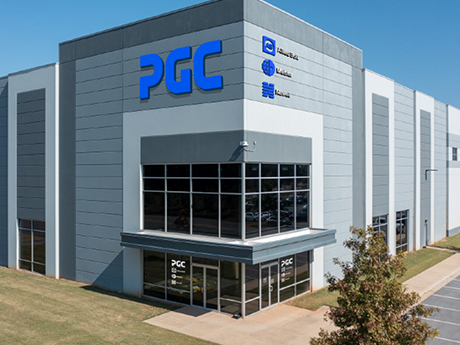After several years of breakneck growth, Atlanta’s industrial sector has clearly shifted into a mid-cycle recalibration. Vacancy has climbed to 8.4 percent, well above the 10-year average of 5.8 percent, as a record wave of big-box deliveries collides with softer demand.

Twelve-month net absorption turned negative for the first time since 2011, dropping 453,000 square feet despite 14.9 million square feet of new deliveries over the past year. Developers and tenants alike are adjusting, but the region’s logistics advantages and diverse economy keep long-term fundamentals intact.
Supply and demand
The pandemic-era surge of speculative construction has decisively slowed. Construction starts have fallen roughly 70 percent from the five-year average, leaving 16.3 million square feet under construction, with just 25 percent available — down from 60 percent a year ago. Most large projects are now data centers, such as a 1.5 million-square-foot QTS facility in Fayette/Coweta County and a 1.2 million-square-foot Microsoft data center near Hartsfield-Jackson Atlanta International Airport.
Vacancy is rising fastest in submarkets that saw heavy new supply. Kennesaw/Acworth, for example, has added over 9 million square feet since 2023 and now posts about 13 percent availability for buildings sized 200,000 square feet and larger. Sublease availability has grown to 14.1 million square feet, up from 9.6 million square feet a year ago, as third-party logistic providers (3PLs) and home-goods tenants consolidate or exit leases.
Still, smaller infill properties remain tight. Buildings under 50,000 square feet show just 6 percent availability, with high demand along the Ga. Highway 400 corridor and in Gwinnett and North Fulton counties, where growing suburban populations drive service-oriented users.
Leasing and rents
Leasing volume has cooled, particularly for spaces over 200,000 square feet. Only 11 new logistics leases above 200,000 square feet were signed in 2025 through mid-year, compared with nearly 20 in the same period of 2024. Notable recent deals include Broadrange Logistics (309,000 square feet in Kennesaw/Acworth) and Staci Americas (328,000 square feet in Duluth/Suwanee/Buford).
Rent growth is decelerating but remains positive. Market asking rents rose 1.1 percent year-over-year as of second-quarter 2025 — down from an 8 percent decade-long average and well off the 16 percent peak of 2023. Quarter-to-quarter growth slowed to 0.6 percent, the lowest in a decade, and year-end 2025 rent growth is forecast to slip near 2 percent.
Prime infill locations near the airport and I-75 corridor still command premiums, with smaller urban-core spaces achieving $9 to $15 per square foot (triple-net).
Development trends
Atlanta remains a top 10 U.S. market for industrial square footage underway, but the mix has shifted. Big-box speculative warehouses — once the pipeline’s mainstay — are scarce. Build-to-suit and specialized projects dominate, such as the 1 million-square-foot Bremen Logistics Center preleased to Southwire and multiple large-scale data centers.
This pullback is expected to tighten vacancies again by late 2025 or 2026 as fewer projects deliver. Developers that focus on preleased or mission-critical facilities are best positioned to weather near-term softness.
Investment market
Capital markets reflect the slowdown. Industrial sales volume in first-half 2025 was down nearly 30 percent from first-half 2024, though the rolling four-quarter average remains 50 percent above pre-pandemic norms.
Notable transactions include Georgia Power’s $94.8 million purchase of the 825,000-square-foot River Park E-Commerce Center and EQT Exeter’s $241 million acquisition of a 10-property portfolio, six of which are in metro Atlanta. Data centers and last-mile assets are attracting outsized investor interest, with cap rates averaging around 7 percent.
Economic backdrop
Metro Atlanta added about 75,100 residents between 2023 and 2024 and continues to grow faster than the national average, supported by a diverse economy spanning logistics, life sciences and technology. Median household income stands at $87,000, and the labor force remains highly educated, helping sustain long-term industrial demand even as office-using sectors slow.
Bottom line
Atlanta’s industrial market is transitioning from rapid expansion to disciplined growth. Elevated vacancy, negative absorption and slower rent gains underscore a cooling phase, yet the region’s strategic Southeast location, infrastructure strength and ongoing data center and advanced manufacturing investments point to enduring appeal.
Over the next 12 to 18 months, success will favor developers and investors that emphasize location, modern design and build-to-suit certainty while tenants with flexible needs can capitalize on improved negotiating leverage.
— By Shoumic Khan, vice president of Bull Realty’s industrial group. This article was originally published in the October 2025 issue of Southeast Real Estate Business. Sources used in this article include CoStar Group; Bull Realty; Cushman & Wakefield; CBRE; Lincoln Property Co.; Colliers


